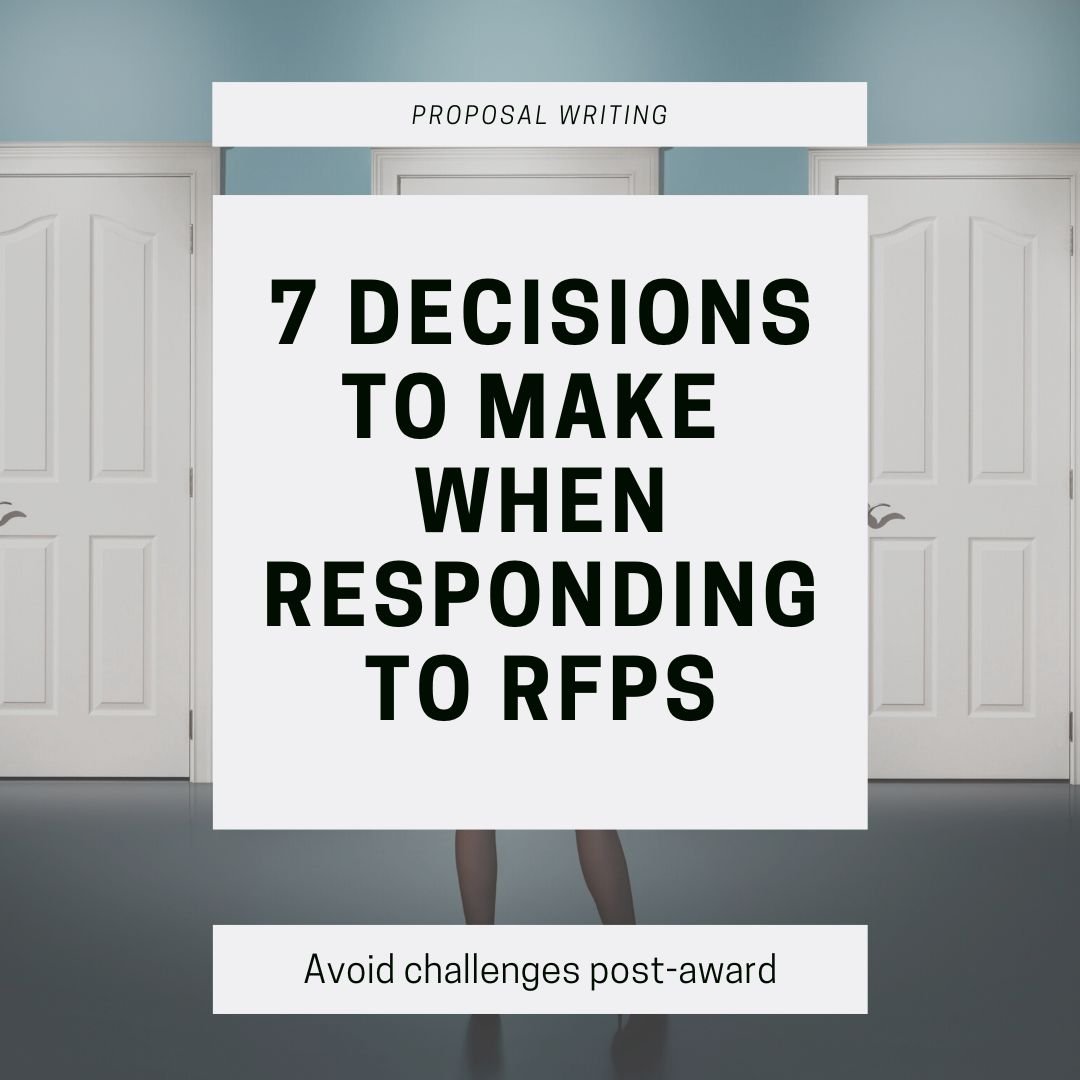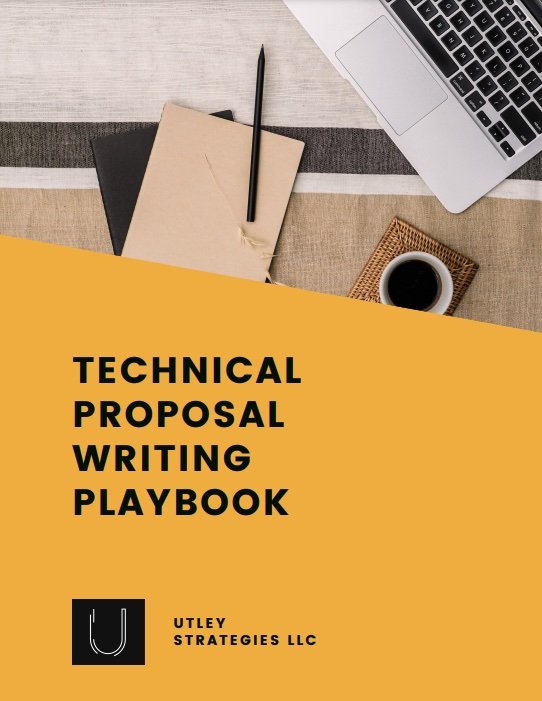7 Decisions to Make When Responding to RFPs
RFPs have the potential to bring large amounts of revenue into an organization while also bringing the risk of wasted time working on these competitive proposals.
To ensure you put your best foot forward, these seven key decisions will help you determine if an RFP is right for your company.
What will it take to manage the project?
Before you pitch your company for a project or contract, it’s essential to consider what will happen after you win.
For example, I worked with a client who was responding to an RFP that would more than double the company’s revenue. In order to manage the project post-award, he would have to hire 100 employees.
The size of his current team? 35.
While this project would be huge for the business, it simply wasn’t realistic to be able to manage that project to the level of quality that he wanted. Not to mention the fierce competition from bigger competitors. He ultimately determined that it wasn’t a good fit at that time.
It’s important to ensure that your company can successfully manage the project once you win it to have a happy client, maintain your reputation, and not burn out your employees.
Why should the customer choose us over the competition?
This one is essential for actually winning the project.
One of the most important determinations when working with RFPs is how you will compete.
In order to create a strong win strategy, you need to understand the customer, their goals, your competition, and how you help the customer meet their goals better than your competitors.
Developing this strategy requires making decisions about how to position your offering, if you will include any value-added offers, how to price competitively, and what the most important components of your solution are so you can highlight them in your proposal.
How can we prove we are capable of doing this project?
Once you figure out your overall strategy, the next step is to prove that you can follow through on what you’re proposing.
One of the most common ways to prove expertise is to showcase past clients. To do this, you will need to decide on the best examples of your work as it relates to this specific project, work with the client to get a testimonial, and craft a case study that highlights your work. You may also need to provide references, depending on the RFP, and it’s best to decide early on who you will be using as a reference to gather all of the information you will need.
Does this project align with our growth goals?
Sometimes you come across an RFP that your company technically could support, but it’s not your area of expertise.
When this happens, it’s important to take a moment to reflect and decide if this is an area where your company should be expanding. Will the project help you move into a new market or would it be a one-time project?
If it isn’t within your area of expertise, you will have to dedicate resources to the project, spend more time figuring out how to complete the work, and miss out on a future opportunity that aligns with your goals because you’ve already committed to this other project.
This question is very specific to each organization, and the approach will depend on your overall company goals. Because RFPs are so competitive and time-consuming, however, it’s important to make sure it’s worth the effort.
Is there enough time to create a thoughtful, competitive proposal?
RFPs mean deadlines, and that deadline directly impacts your ability to create a winning proposal.
Especially for large, sought-after contracts, sometimes it’s better to sit this one out if you don’t have the time to create a compelling proposal and instead use the time to observe the market and start planning for the next time the contract comes up to bid.
Slapping together a proposal and sending it out to the customer rarely works in your favor (unless they’re evaluating solely on price). Many times, it can actually hurt your reputation as a company, and it will make selling to that organization harder in the future.
When you receive an RFP, review the requirements and compare them with the deadline. If it’s tight, decide if you will be able to create a winning proposal or if it’s too late.
Are we able to price competitively and still be profitable?
Another common challenge is related to pricing.
Sometimes, you’re one of the higher-priced companies in the field, and an RFP places a high weight on pricing.
In those moments, you will have to decide if it’s possible to lower your price to be more competitive, and if so, how far you can lower it.
This decision should always be made in conjunction with the evaluation criteria. If price is a low-scoring factor and you can make up points in other areas, then it may be worth it to keep your price higher and not leave money on the table.
Each RFP is unique, and that means you will have to determine this on a per-RFP basis.
Are the legal risks worth the project?
Some organizations have strict contractual requirements and do not accept any exceptions.
In those cases, you will have to work with your legal team to determine if the project risks are worth it for your company.
If there are contract terms that you would prefer not to agree to, then you’ll have to decide if pursuing the project is worth the risk.
No matter what RFP you’re responding to, making these decisions before you start writing the content will help you to make the best decision for your company.




